Abdul Jabbar
Analysis of Frequency-Diverse and Dispersion Effects in Dynamic Metasurface Antenna for Holographic Sensing and Imaging
Oct 23, 2025Abstract:Dynamic metasurface antennas (DMAs) represent a novel approach to programmable and affordable electromagnetic wave manipulation for enhanced wireless communications, sensing, and imaging applications. Nevertheless, current DMA designs and models are usually quasi-narrowband, neglecting the versatile frequency-diverse manifestation and its utilization. This work demonstrates the frequency-diversity and dispersion operations of a representative DMA structure at the millimeter-wave band. We demonstrate flexible dispersion manipulation through dynamic holographic reconfigurability of the meta-atoms in a DMA. This effect can create distinct radiation patterns across the operating frequency band, achieving flexible frequency diversity with enhanced scanning range within a compact, reconfigurable platform. It eliminates the need for wideband systems or complex phase-shifting networks while offering an alternative to frequency-scanned static beams of traditional leaky-wave antennas. The results establish fundamental insights into modelling and utilization of dispersive effects of DMAs in next-generation near-field and far-field holographic sensing and computational holographic imaging applications.
Congenital Heart Disease Classification Using Phonocardiograms: A Scalable Screening Tool for Diverse Environments
Mar 28, 2025



Abstract:Congenital heart disease (CHD) is a critical condition that demands early detection, particularly in infancy and childhood. This study presents a deep learning model designed to detect CHD using phonocardiogram (PCG) signals, with a focus on its application in global health. We evaluated our model on several datasets, including the primary dataset from Bangladesh, achieving a high accuracy of 94.1%, sensitivity of 92.7%, specificity of 96.3%. The model also demonstrated robust performance on the public PhysioNet Challenge 2022 and 2016 datasets, underscoring its generalizability to diverse populations and data sources. We assessed the performance of the algorithm for single and multiple auscultation sites on the chest, demonstrating that the model maintains over 85% accuracy even when using a single location. Furthermore, our algorithm was able to achieve an accuracy of 80% on low-quality recordings, which cardiologists deemed non-diagnostic. This research suggests that an AI- driven digital stethoscope could serve as a cost-effective screening tool for CHD in resource-limited settings, enhancing clinical decision support and ultimately improving patient outcomes.
Millimeter-Wave ISAC Testbed Using Programmable Digital Coding Dynamic Metasurface Antenna: Practical Design and Implementation
Feb 19, 2025Abstract:Dynamic Metasurface Antennas (DMAs) are transforming reconfigurable antenna technology by enabling energy-efficient, cost-effective beamforming through programmable meta-elements, eliminating the need for traditional phase shifters and delay lines. This breakthrough technology is emerging to revolutionize beamforming for next-generation wireless communication and sensing networks. In this paper, we present the design and real-world implementation of a DMA-assisted wireless communication platform operating in the license-free 60 GHz millimeter-wave (mmWave) band. Our system employs high-speed binary-coded sequences generated via a field-programmable gate array (FPGA), enabling real-time beam steering for spatial multiplexing and independent data transmission. A proof-of-concept experiment successfully demonstrates high-definition quadrature phase-shift keying (QPSK) modulated video transmission at 62 GHz. Furthermore, leveraging the DMA's multi-beam capability, we simultaneously transmit video to two spatially separated receivers, achieving accurate demodulation. We envision the proposed mmWave testbed as a platform for enabling the seamless integration of sensing and communication by allowing video transmission to be replaced with sensing data or utilizing an auxiliary wireless channel to transmit sensing information to multiple receivers. This synergy paves the way for advancing integrated sensing and communication (ISAC) in beyond-5G and 6G networks. Additionally, our testbed demonstrates potential for real-world use cases, including mmWave backhaul links and massive multiple-input multiple-output (MIMO) mmWave base stations.
Compact Millimeter-Wave Antenna Array for 5G and Beyond: Design and Over-The-Air (OTA) Measurements Using Compact Antenna Test Range (CATR)
Jul 13, 2024



Abstract:This paper presents the design and comprehensive measurements of a compact high-gain 32 element planar antenna array covering the n257 (26.5-29.5 GHz) millimeter wave (mmWave) band. First an 8-element quasi-uniform linear array is designed using a series-fed topology with fan shaped beams for point-to-multipoint connectivity followed by a compact corporate series feed network to design high-gain directive array for point-to-point connectivity. The radiation patterns of both antenna arrays in the azimuth and elevation planes are measured across a 180 degrees span using an over-the-air (OTA) compact antenna test range (CATR) system with a single rotary positioner. Moreover the procedure for quantifying and measuring the gain of mmWave antenna arrays is demonstrated in detail. The peak measured gain of the planar array is 18.45 dBi at 28.5 GHz while the half-power beamwidth of the planar array in the elevation and azimuth planes varies between 11 to 13 degrees, and 23-27 degrees respectively within the 26.5-29.5 GHz range. The measurement results match well with the simulations. The designed antenna array is suitable for various emerging 5G and beyond mmWave applications such as fixed wireless access, mmWave near-field focusing, high-resolution radar systems, and the characterization of mmWave path loss and channel sounding in diverse indoor environments and smart factories.
Proactive Blockage Prediction for UAV assisted Handover in Future Wireless Network
Feb 06, 2024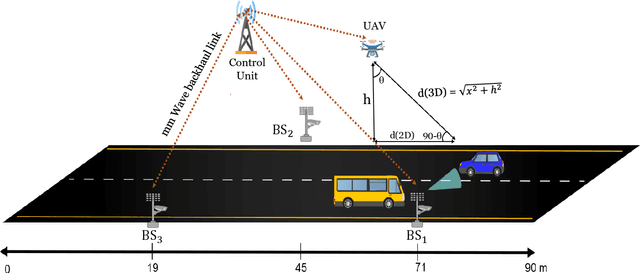
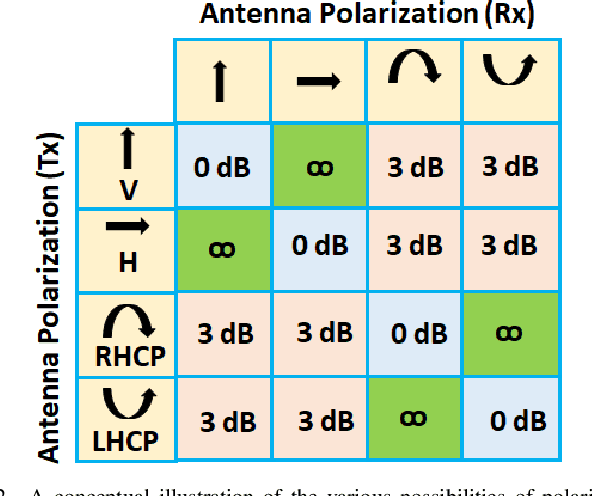
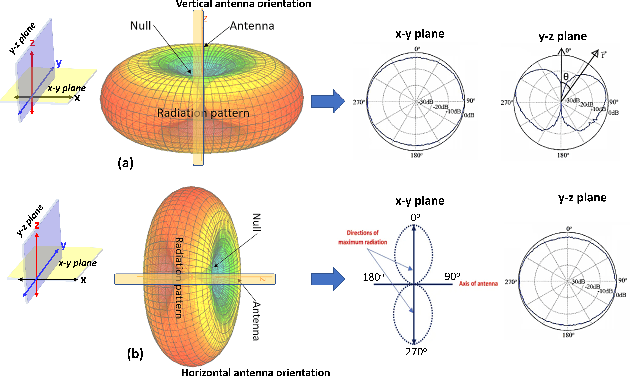
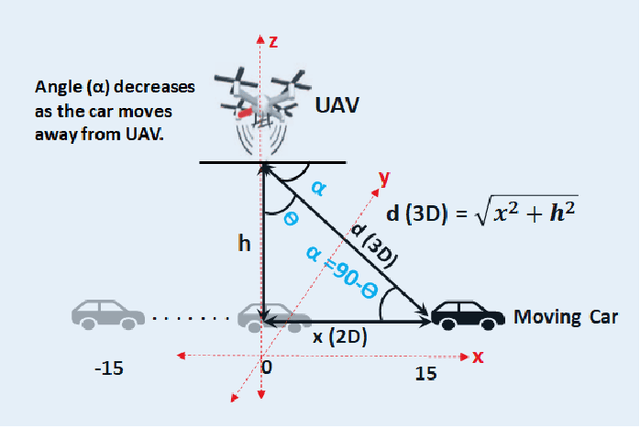
Abstract:The future wireless communication applications demand seamless connectivity, higher throughput, and low latency, for which the millimeter-wave (mmWave) band is considered a potential technology. Nevertheless, line-of-sight (LoS) is often mandatory for mmWave band communication, and it renders these waves sensitive to sudden changes in the environment. Therefore, it is necessary to maintain the LoS link for a reliable connection. One such technique to maintain LoS is using proactive handover (HO). However, proactive HO is challenging, requiring continuous information about the surrounding wireless network to anticipate potential blockage. This paper presents a proactive blockage prediction mechanism where an unmanned aerial vehicle (UAV) is used as the base station for HO. The proposed scheme uses computer vision (CV) to obtain potential blocking objects, user speed, and location. To assess the effectiveness of the proposed scheme, the system is evaluated using a publicly available dataset for blockage prediction. The study integrates scenarios from Vision-based Wireless (ViWi) and UAV channel modeling, generating wireless data samples relevant to UAVs. The antenna modeling on the UAV end incorporates a polarization-matched scenario to optimize signal reception. The results demonstrate that UAV-assisted Handover not only ensures seamless connectivity but also enhances overall network performance by 20%. This research contributes to the advancement of proactive blockage mitigation strategies in wireless networks, showcasing the potential of UAVs as dynamic and adaptable base stations.
Methods and advancement of content-based fashion image retrieval: A Review
Mar 30, 2023



Abstract:Content-based fashion image retrieval (CBFIR) has been widely used in our daily life for searching fashion images or items from online platforms. In e-commerce purchasing, the CBFIR system can retrieve fashion items or products with the same or comparable features when a consumer uploads a reference image, image with text, sketch or visual stream from their daily life. This lowers the CBFIR system reliance on text and allows for a more accurate and direct searching of the desired fashion product. Considering recent developments, CBFIR still has limits when it comes to visual searching in the real world due to the simultaneous availability of multiple fashion items, occlusion of fashion products, and shape deformation. This paper focuses on CBFIR methods with the guidance of images, images with text, sketches, and videos. Accordingly, we categorized CBFIR methods into four main categories, i.e., image-guided CBFIR (with the addition of attributes and styles), image and text-guided, sketch-guided, and video-guided CBFIR methods. The baseline methodologies have been thoroughly analyzed, and the most recent developments in CBFIR over the past six years (2017 to 2022) have been thoroughly examined. Finally, key issues are highlighted for CBFIR with promising directions for future research.
A Survey on Generative Adversarial Networks: Variants, Applications, and Training
Jun 09, 2020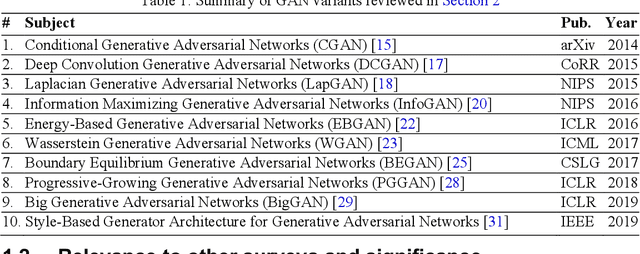



Abstract:The Generative Models have gained considerable attention in the field of unsupervised learning via a new and practical framework called Generative Adversarial Networks (GAN) due to its outstanding data generation capability. Many models of GAN have proposed, and several practical applications emerged in various domains of computer vision and machine learning. Despite GAN's excellent success, there are still obstacles to stable training. The problems are due to Nash-equilibrium, internal covariate shift, mode collapse, vanishing gradient, and lack of proper evaluation metrics. Therefore, stable training is a crucial issue in different applications for the success of GAN. Herein, we survey several training solutions proposed by different researchers to stabilize GAN training. We survey, (I) the original GAN model and its modified classical versions, (II) detail analysis of various GAN applications in different domains, (III) detail study about the various GAN training obstacles as well as training solutions. Finally, we discuss several new issues as well as research outlines to the topic.
 Add to Chrome
Add to Chrome Add to Firefox
Add to Firefox Add to Edge
Add to Edge